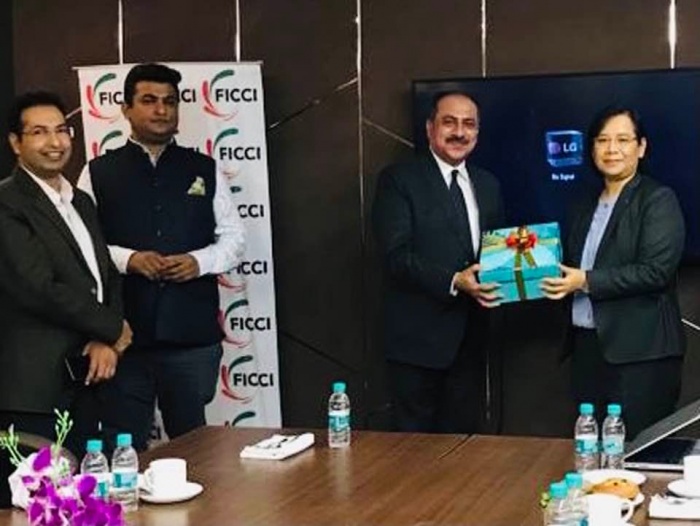When Umrao Jaan was being shot in the early 1980s, the cast and crew of the Rekha-starrer film would visit Raheem’s regularly. “I was too young then, so I don’t have any memory, but my father told me that the entire cast ate at our restaurant on more than one occasion and Farooq Shaikh had loved the nihari,” says Bilal Raheem Ahmad, one of five brothers who run the restaurant now.
At 8 pm in old Lucknow’s Chowk area, Raheem’s hotel is one of the busiest spots in the area. Most customers thronging the restaurant, in a basement near the Tehseen mosque, are there for the nihari kulcha — meat stew with baked flatbread. The nihari, which is traditionally a breakfast dish, is available all day at Raheem’s. In the alley leading to the restaurant, one can smell the kulchas being baked on the tandoor from a distance. After entering the basement, the aroma changes to that of slow-cooked meat.
Bilal says the delicacy has always been the bestselling item at his restaurant, which was started by his great grandfather Haji Abdul Ghani in around 1920. The family belongs to old Lucknow’s Chowk area. The restaurant started selling the nihari kulcha in the 1940s under Haji Abdul Ghani’s son and Bilal’s grandfather Haji Abdul Raheem, after whom the restaurant is named. “It was Raheem sahab who invented the ghilaf kulcha which is served with the nihari,” says Bilal, 48, who generally sits at the restaurant’s counter every day from 5.30 pm to 11 pm.
After Haji Abdul Raheem, who ran the restaurant till 1983, the restaurant was taken over by Raheem’s father Fakruddin, who managed it till 2000, after which Bilal and his four brothers — Manzoor Ahmad (60), Mohammed Usama (47), Mohammed Shuaib (40) and Zaid Ahmad (37) — run it.
“The word ghilaf means a cover. The ghilaf kulcha has two layers which makes it so special. The upper layer has flour, ghee and creamy milk, while the lower layer has flour and yeast which makes the kulcha rise. The nihari is cooked overnight, for 6-7 hours, on very low heat over wood,” says Bilal.
He says, one of the most important aspects of his restaurant is the tehzeeb (etiquette). “We never return a customer without serving them. There are several madrasas for the poor near our restaurant. My grandfather Haji Abdul Raheem had written two points in his will — one was that we must always serve the poor and, second, that we will never ever compromise on the quality of the food. We are doing everything to follow his orders and hence, did not open a single branch,” says Bilal with a smile, while he returns change to 14-year-old Owais, who studies at the Furqania madrasa next to the Tehseen mosque.
The madrasa student says he comes to the restaurant almost every second day. “I get my own tiffin box and get one kulcha and some nihari for Rs 20,” says Owais, who belongs to neighbouring Barabanki district and stays at the residential madrasa.
The mutton nihari and two kulchas are priced at Rs 148, while the buffalo nihari and two kulchas for Rs 83. The paaya nihari, both mutton and buffalo, comes for an additional Rs 20. In between serving the evening crowd karara (crispy) kulchas, Habib Ahmad (62), who has been working at Raheem’s for the last 45 years, says, “The paaya nihari is mostly made with meat from the calf area.” The restaurant also sells mutton biryani for Rs 300 with four “big” pieces of mutton. Another bestseller is pasanda. A plate of nihari and two kulchas used to be sold at Rs 1.40 in the early 1980s when Habib started working there.
Bilal says, till date, the restaurant buys raw spices and uses them only after getting them cleaned and ground. “Our nihari has around 95 types of spices. We put them in a potli (bundle) and drop them into the nihari when the cooking starts. The recipe was given to us by our father, who got it from his grandfather Haji Raheem sahab,” says the co-owner. The meat used to make the nihari is bought daily. No artificial ingredients are used, and “it is only cooked in a copper deg (cauldron) with kalai (a layer of tin) on the outside. The kalai is a must for slow cooking. It doesn’t let the food burn,” he says, with a wry smile, before adding, “I can’t tell you what our spices are.”
Waiting for their “wholesome meal” at the restaurant are childhood friends — Umar Raza (44) and Azam Hussain (42) — both tailors. but Raza is getting annoyed by the delay, their order — two plates of steaming hot paaya nihari with a sprinkling of green coriander and chilli on top and one kulcha each — finally arrives and they start guzzling the food. They say they have been coming together to the restaurant for the past 15 years. “It is a filling meal which is the secret to our great health,” says Hussain, pointing to Raza’s bulging tummy.
Bilal says, people from “far-off” places come during Ramzan, when the restaurant remains open from iftar (meal eaten to break the fast) to sehri (pre-dawn meal before the fast). “Ramzan is when Lucknow and Chowk has the highest number of visitors. All the tables are occupied through the evening and nights,” says Bilal, adding that the next generation will continue to serve the food the way it has been served for almost a hundred years.


 The UP State Council of FICCI organised a programme to host minister counsellor (commercial affairs), royal Thai embassy, and hold an extensive discussion on bilateral trade, export-import and Indo-Thailand business opportunity.
The UP State Council of FICCI organised a programme to host minister counsellor (commercial affairs), royal Thai embassy, and hold an extensive discussion on bilateral trade, export-import and Indo-Thailand business opportunity.



